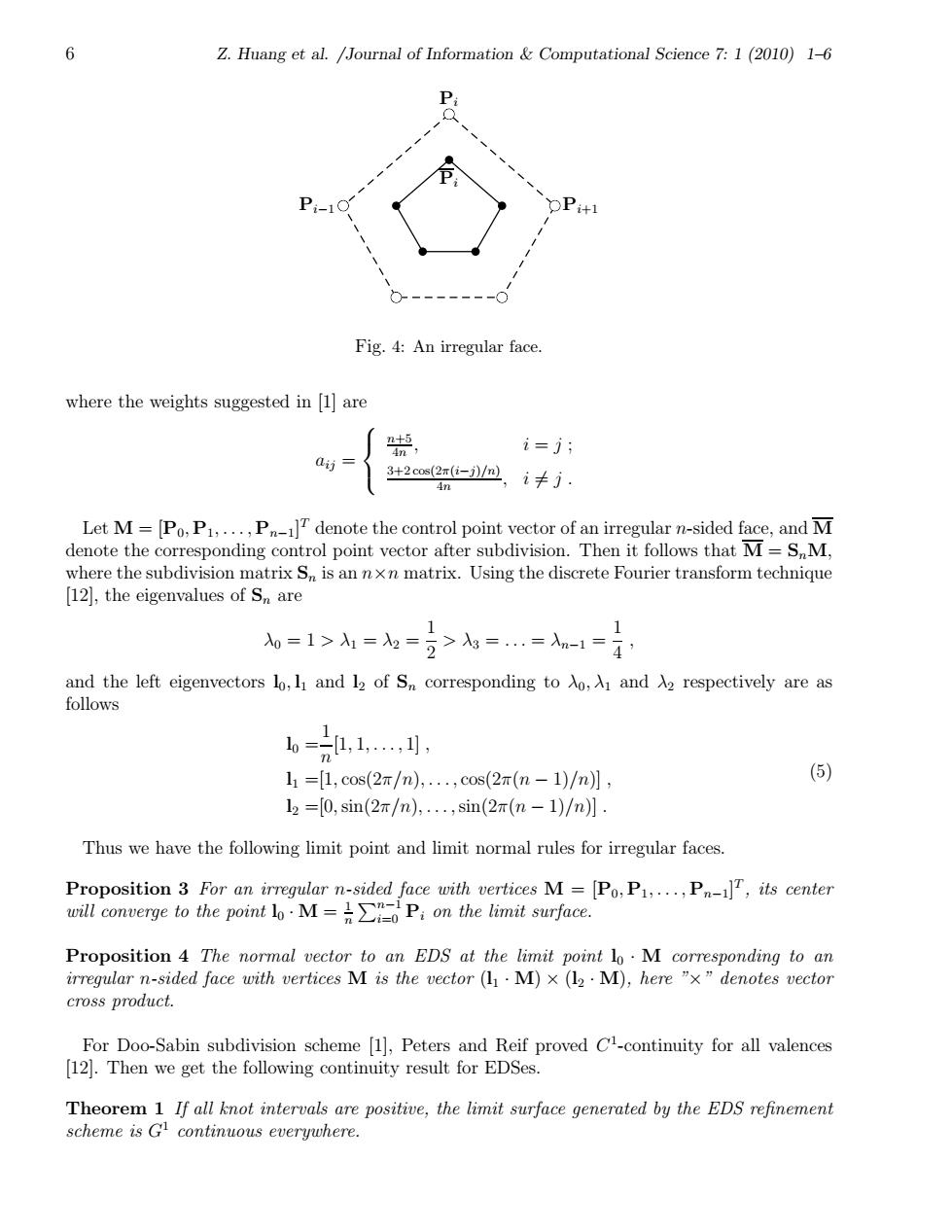正在加载图片...

Z.Hung et al./lournai of Computational Scieace 7:1 (2010)1-6 P Fig.4:An irregular face. i=i: =1>==>=.=-1= etd电of。copodins t友pectivdye 6=2,1, 1 =f1.cos(2x/ni.....cos(2m(n -1)/nil 1=0,sin(2x/n)..sim2r(m-1)/n)1. Tea&eaeaentois,ebmsegmaadshcBsnaa 6 Z. Huang et al. /Journal of Information & Computational Science 7: 1 (2010) 1–6 bc bc bc bc bc b b b b b Pi Pi−1 Pi+1 Pi Fig. 4: An irregular face. where the weights suggested in [1] are aij = n+5 4n , i = j ; 3+2 cos(2π(i−j)/n) 4n , i 6= j . Let M = [P0, P1, . . . , Pn−1] T denote the control point vector of an irregular n-sided face, and M denote the corresponding control point vector after subdivision. Then it follows that M = SnM, where the subdivision matrix Sn is an n×n matrix. Using the discrete Fourier transform technique [12], the eigenvalues of Sn are λ0 = 1 > λ1 = λ2 = 1 2 > λ3 = . . . = λn−1 = 1 4 , and the left eigenvectors l0, l1 and l2 of Sn corresponding to λ0, λ1 and λ2 respectively are as follows l0 = 1 n [1, 1, . . . , 1] , l1 =[1, cos(2π/n), . . . , cos(2π(n − 1)/n)] , l2 =[0,sin(2π/n), . . . ,sin(2π(n − 1)/n)] . (5) Thus we have the following limit point and limit normal rules for irregular faces. Proposition 3 For an irregular n-sided face with vertices M = [P0, P1, . . . , Pn−1] T , its center will converge to the point l0 · M = 1 n Pn−1 i=0 Pi on the limit surface. Proposition 4 The normal vector to an EDS at the limit point l0 · M corresponding to an irregular n-sided face with vertices M is the vector (l1 · M) × (l2 · M), here ”×” denotes vector cross product. For Doo-Sabin subdivision scheme [1], Peters and Reif proved C 1 -continuity for all valences [12]. Then we get the following continuity result for EDSes. Theorem 1 If all knot intervals are positive, the limit surface generated by the EDS refinement scheme is G1 continuous everywhere